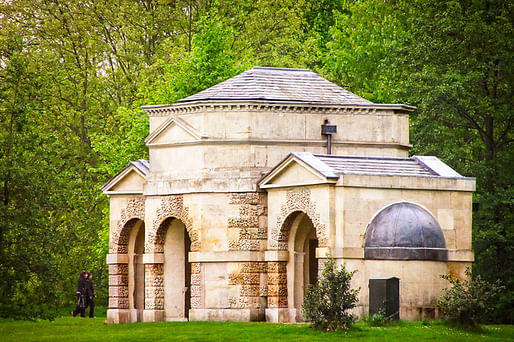

The Serpentine Galleries in London announced earlier today the designer of the 2016 iteration of their annual Pavilion series: Bjarke Ingels Group, or BIG, the Copenhagen and New York-based global powerhouse.
This summer marks the 16th Pavilion of the acclaimed program, which began in 2000. Conceived initially by Julia Peyton-Jones, the outgoing co-director of the Galleries, the Serpentine’ Pavilion commission is awarded each year to noted architects who have never built in the UK.

As Peyton-Jones’ swan song, this summer’s program will be expanded to include four other 25 square meter structures, or “Summer Houses”, scattered on the lawns of Hyde Park in close proximity to the Galleries. These will be designed by Kunlé Adeyemi – NLÉ (Amsterdam/Lagos), Barkow Leibinger (Berlin/New York), Yona Friedman (Paris) and Asif Kahn (London).
Since its inception, the Serpentine Pavilion has drawn large crowds, garnering public attention for practitioners whose reputations had not necessarily exceeded the limits of the discipline yet. It ranks among the top-ten most visited architectural exhibitions in the world.
BIG, helmed by the flamboyant and media-savvy Bjarke Ingels, has collected a wealth of high-profile commissions in the last few years, helping them to achieve far greater public recognition than the past two designers of the Pavilion, the Madrid-based SelgasCano or the Santiago-based Smiljan Radic.

Known for their crowd-pleasing and photogenic work, BIG will have 6 months to design and realize the 300 square meter Pavilion. By day, the structure will house a café enabled through a collaboration between the Galleries and Harrods. At night, the Pavilion is intended as a space for “learning, debate and entertainment.”
There is no budget for the project, which relies instead on sponsorship, help-in-kind support and the sale of the Pavilion. So far, only a proposal by MVRDV has exceeded the fiscal limits of the program.
The four Summer Houses introduced this year are intended to respond to the nearby Queen Caroline’s Temple, a classical-style summer house built in 1734. There is little word on their program, besides providing visitors an “unrivaled, first-hand experience of contemporary architecture”. The expanded program will be submitted later this month to the Westminster City Council Planning Office and District Surveyor’s Office.

Kunlé Adeyemi is a Nigerian architect and the founder of NLÉ. Alongside built work, NLÉ serves as a strategy advisor, making use of their extensive research on urban systems in the rapidly-growing economies of the developing world. Like Bjarke Ingels, Adeyemi began his career working under Rem Koolhaas at OMA.

Barkow Leibenger, founded Regine Leibinger and her partner Frank Barkow in 1993, has offices in Berlin and New York. Known for their research-based, material-sensitive design practice, Barkow Leibenger have realized a wide range of built projects, including the Stadthaus M1 in Freiburg and the Tour Total tower in Berlin.

At 93, Yona Friedman, the Hungarian-born French architect, is the oldest of the Pavilion designers this year. A survivor of the Holocaust, Friedman first achieved recognition in the late 1950s during the so-called “age of megastructures” with his theoretically-charged speculative projects. A profoundly influential urban thinker, Friedman has little built work besides models.
“Architecture is not simply the art of building: it is rather that of space management,” Friedman once stated. While his influence is visible even in the work of development-friendly practices like BIG, the radical holism of his thinking remains largely unrivaled to this day, and for some, his commission will be the most eagerly anticipated.

Asif Khan, a London-based architect whose practice operates across the fields of architecture, industrial and furniture design, recently won the 2014 Cannes Lion for Innovation Gran Prix. His project, “MegaFaces,” a pavilion for the Sochi Olympics that incorporated a kinetic facade that recreated the faces of visitors. Khan's entry for the Guggenheim Helsinki competition was shortlisted and included a translucent, “smart” glazed skin.
At this point, no designs or further details have been announced about any of the designs. Likewise, it is not clear to what degree – if at all – the Pavilion and Summer Houses will be in dialogue.

“All projects have been thrilling to commission and will be equally exciting to realize,” state Peyton-Jones and Obrist. “We cannot wait to unveil them all this summer.”
Want to learn more about past Serpentine Pavilions and their designers? Check out some older Archinect coverage:

2 Comments
Asif Kahn to design 2016 Serpentine Pavilion.... Who are we kidding.... Let's do this, corrupt media!
Yona Friedman and Bjarke should design something together, I bet no one would critique that one.
Block this user
Are you sure you want to block this user and hide all related comments throughout the site?
Archinect
This is your first comment on Archinect. Your comment will be visible once approved.